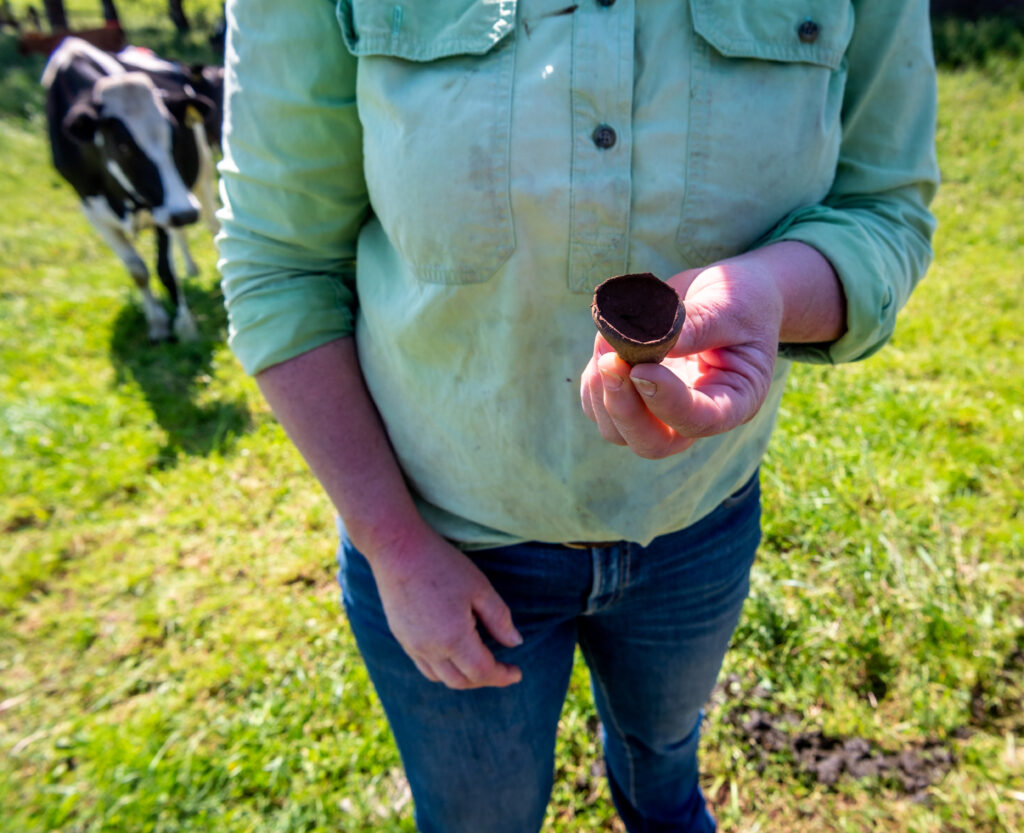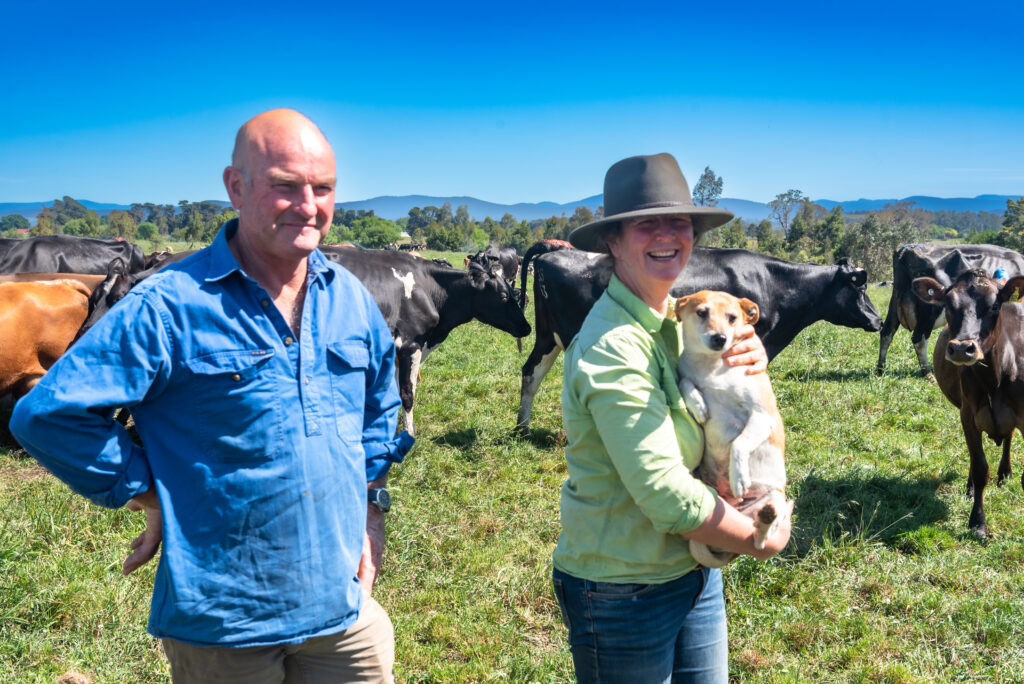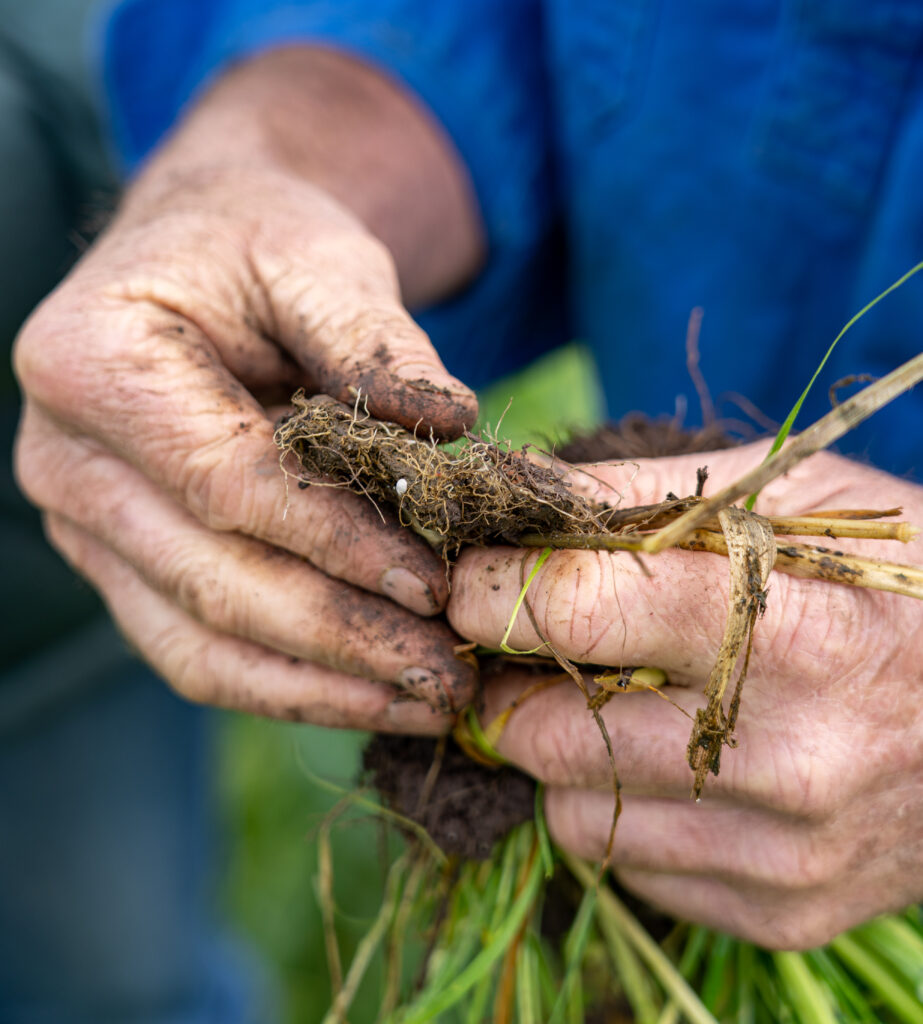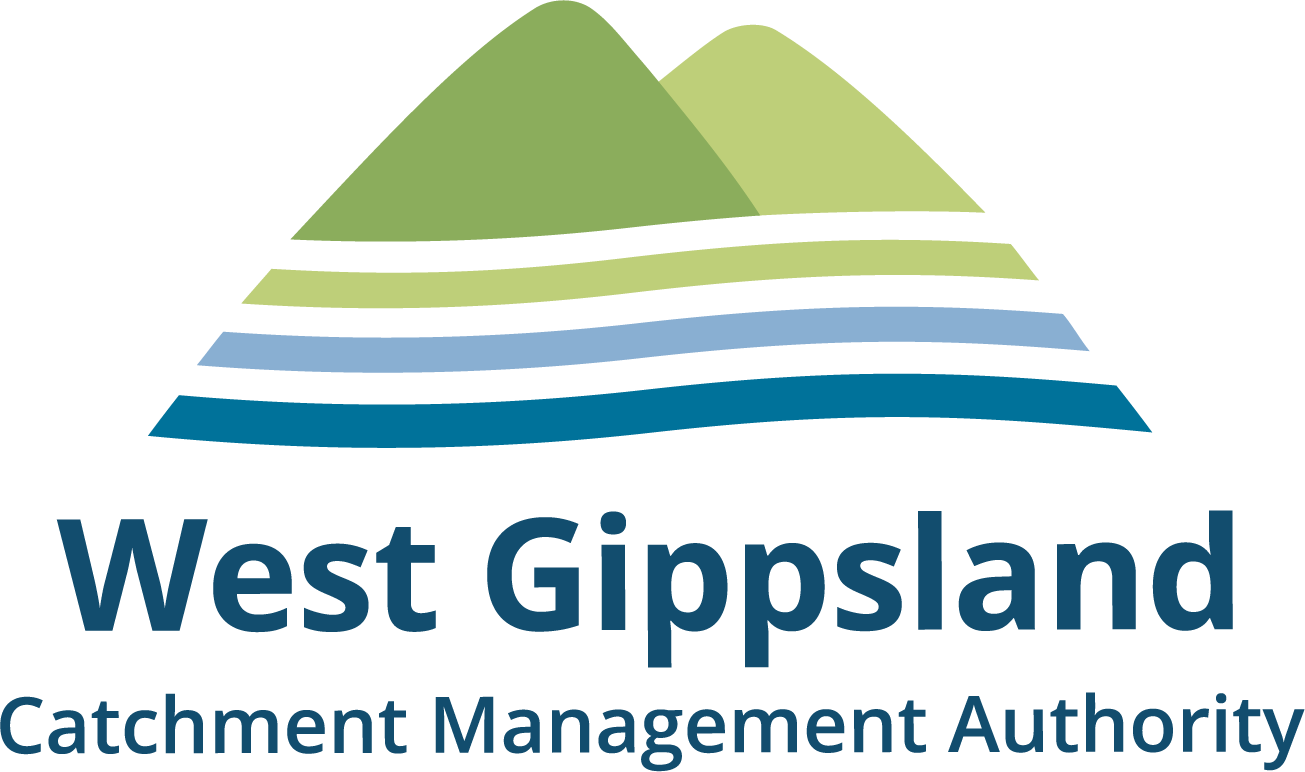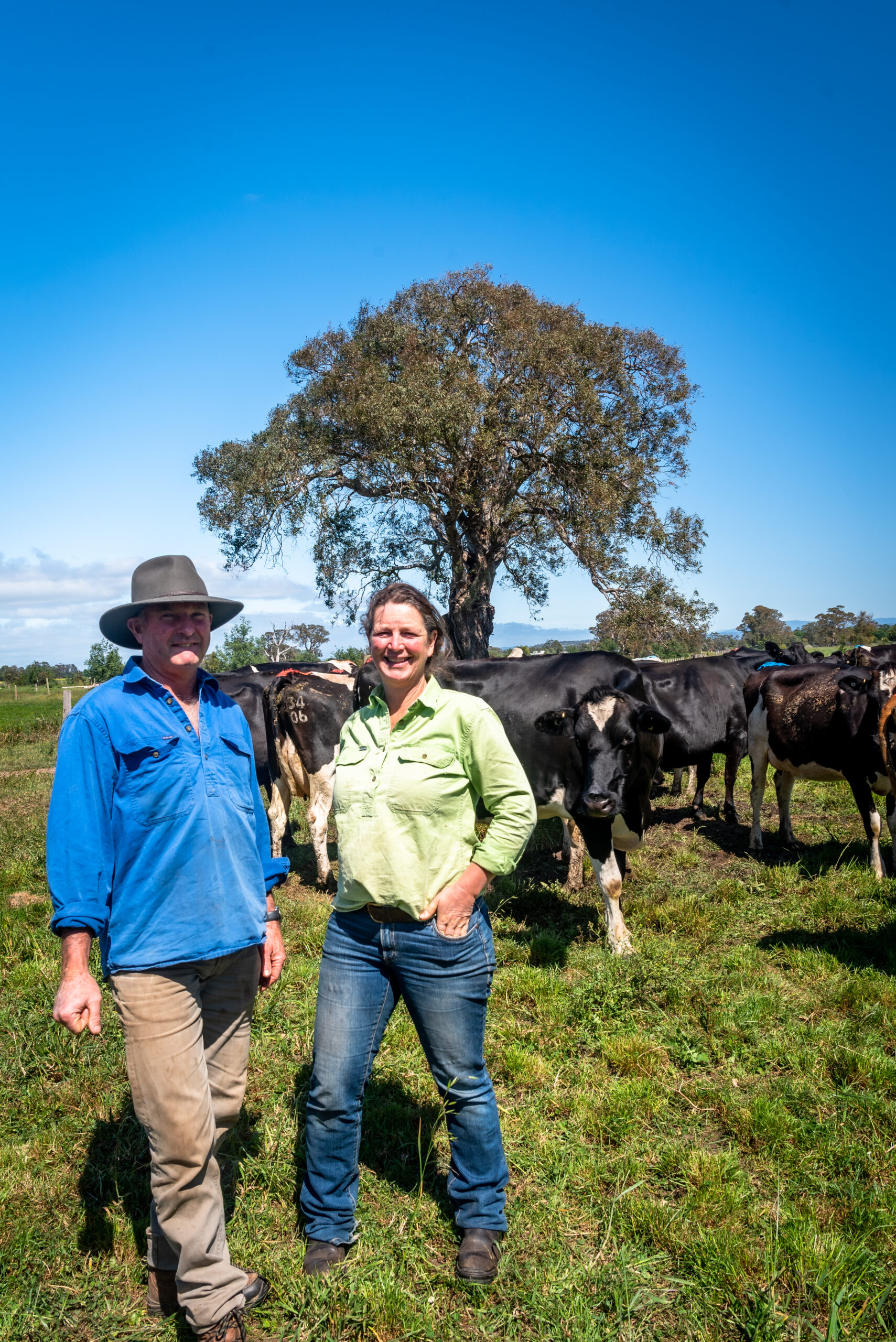The science of sustainability
When Kate Mirams and Peter Neaves laser graded their top paddock in 2019, it blew dust over the small town of Newry – it also made Kate’s heart sink. She knew it was time for change.
“It was embarrassing and an example of worst practice. We thought how can we really fix up this soil quickly?” said Kate.
The couple made a call and began working with their local West Gippsland Catchment Management Authority and Agriculture Victoria reps to repair the soil on their 330 acre dairy farm and find better and more sustainable ways of farming while still making a profit.
Over the following years, they hosted trials of regenerative agricultural practices on their farm and have shared their learnings with others.
“We play at the edges of what is good for soil,” said Kate who is now looking forward to fungus and nematodes appearing that can store nutrients deep in the resurrected soil.
A “deep curiosity” is what drives the couple and their farm forward, with a mission to inspire others in their local and broader community along the way.
They moved to their farm in Newry in 2003 – having lived and worked in the district for ten years, Kate from New South Wales and Pete from Lakes Entrance. Both love the surrounding mountains and know it is an “extraordinary luxury” to farm on mighty Macalister River floodplain with reliable irrigation.
“We were putting on more and more fertiliser and just seemed to be going backwards. We’re on some of the best soils and need to make them work for us,” said Peter.
They participated in a Nicole Masters course and “found their tribe” and committed to learning and change.
“We remain focused on making a profit and just play at the edges of what is good for soil – so we can still grow plenty of quality feed,” Kate said.
“A farm is an ecological being. When we don’t understand the ecology, it’s hard to make good decisions. We look through an ecology lens, we aim to create the conditions we want rather than having to intervene to kill what you don’t want.”
The couple were often the only dairy farmers in the room as this approach is generally more of a focus for beef. “They advocate very long pasture recovery periods on beef farms, but on dairy, milk production crashes with this approach. We need to be able to do it in a way that suits dairy,” Kate said.
Kate recalls when she worked out their pasture consumption had remained at 12 tonnes, despite using only 20 kilograms of nitrogen per hectare. “We used to use 200 kilograms per hectare. Growing 12 tonnes with just 20 kilograms per hectare, that was a sign the ecology is fixing the nitrogen somehow – something had changed. We are no worse off financially and have now taken this approach across our whole farm.” The only year they haven’t made a profit was in the super drought of 2016.
They have also been determined to share their learnings with other farmers and participate in groups and workshops and have hosted field days on their farm and in Newry Hall in conjunction with Maffra and Districts Landcare Network, of which Pete is currently treasurer, and Gippsland Agricultural Group and GippsDairy.
“We don’t want it to be just a good practice for us – that’s the important part – to make this easy for other farmers to do. When you are a farmer trying to learn, you can YouTube about it all you like but there is something extraordinarily powerful about walking on farm and seeing it with your own eyes and hearing from people who are doing it,” Kate enthused.
Anthony Goode, Land Programs Coordinator for West Gippsland CMA gives an industry perspective. “Very few farmers are undertaking regenerative farming at the commercial scale and under the same risk profile as Peter and Kate. More importantly, they have invited the community along on their journey,” he said.
And the risk, they both agree, is well worth it as they continue to work towards their shared vision of healing paddocks and the broader food system.
“There are only so many harvests left, we really are a tipping point. We want to improve the ground and make it a carbon sink and be able to show it can be done and get a few more people on board,” said Pete.”
Kate’s ambitions stretch well beyond the farm gate. She believes everyone has the right to access quality produce and won’t stop until she gets there.
“I want the whole food system to change so the quality of food is exceptional, so we’ll eliminate a lot of disease, so the ecosystem is thriving and we help everyone through better quality food that is grown within a symbiotic relationship with the soil. I want insects and butterflies and birds and all the things we know, and don’t know, to thrive as well.”
